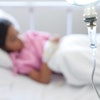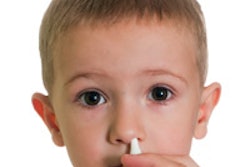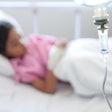
Successful sedation in dentistry does not end when the patient departs the practice. Children, in particular, are sensitive to sedation, and as childhood caries rates remain high, the need for sedation will also persist.
Researchers from the department of pediatric dentistry at Louisiana State University Health Sciences Center (LSUHSC) School of Dentistry noticed the dearth of data about children's response to sedation after they have left the practice where the dental procedure took place. In a study published in Anesthesia Progress, the researchers compared the adverse events experienced by children administered meperidine and hydroxyzine versus midazolam eight hours and 24 hours after sedation (Summer 2013, Vol. 60:2, pp. 54-59).
Their results could help set expectations and inspire advice for parents as they prepare to take their children home.
"Sleeping in the car during the ride back home was observed in half of the sedated children in this study," wrote Priyanshi Ritwik, an associate professor in the department of pediatric dentistry, and colleagues. "This has the risk of airway obstruction."
The researchers also observed different reactions to the sedatives they compared. "Vomiting was seen in children sedated with meperidine and hydroxyzine but not in the children sedated with midazolam," they noted. "Prolonged sleep at home was significantly higher in the children sedated with meperidine and hydroxyzine." And most adverse effects were likely to occur in the first eight hours, although some took up to 24 hours to manifest.
The drive home
Sedatives often last longer than the duration of the dental appointment. Consequently, the trip home from the dental practice can be a hazardous one, involving vomiting or worse.
"It is critical to know the effects of these medications beyond the time spent by the child in the dental office, so that parents can be appropriately cautioned about the expected effects and how to distinguish them from any potential emergencies that may lead to airway obstruction," the researchers explained.
During a three-month period, the researchers called the parents of children undergoing sedation at LSUHSC who were willing to participate in a survey eight hours and 24 hours after the procedure. The children included in the study were generally healthy and sedated due to acute situational anxiety.
The eight-hour questionnaire asked predominantly "yes" or "no" questions about complaints of pain, vomiting, snoring, or sleeping in the car on the way home, sleeping at home arousability, irritability, the ability to eat and drink, the need for medications at home, and the need for additional medical care after the appointment. The questions at the 24-hour mark were similar.
The parents of 46 children participated in the study; 40 were sedated with a combination of meperidine and hydroxyzine while the remaining six were sedated with midazolam. In the former group, 16 children reported pain after eight hours and seven of them said it persisted at the 24-hour mark. Only two children in this group had a fever. One child in the midazolam group reported pain in the first eight hours and one child had a fever. There was no statistical difference in the proportion of patients experiencing pain (p = 0.647) or fever (p = 0.349) based on which sedative they were given.
Three children given meperidine and hydroxyzine vomited within eight hours of sedation; none from the midazolam group did. Half of the children from both groups slept in the car after departure. Of those who slept in the car, 13 from the meperidine-hydroxyzine group and one child from the midazolam group had a ride of less than 30 minutes to get home. Five children from the former group and one from the latter had a ride of more than 30 minutes.
"All children in the meperidine and hydroxyzine group exhibited prolonged sleep at home in the eight- to 24-hour period," the researchers noted. "Five children (13%) were difficult to wake up in this time period." In the other group, 67% of the children exhibited prolonged sleep and one of them was difficult to rouse.
The researchers noted that sleeping during the car ride home has the potential for airway obstruction because the children may tilt their head down to their chest. "It is, therefore, important to ask parents to bring another responsible adult to accompany their child in the car when planning sedations for pediatric patients," they concluded.



















